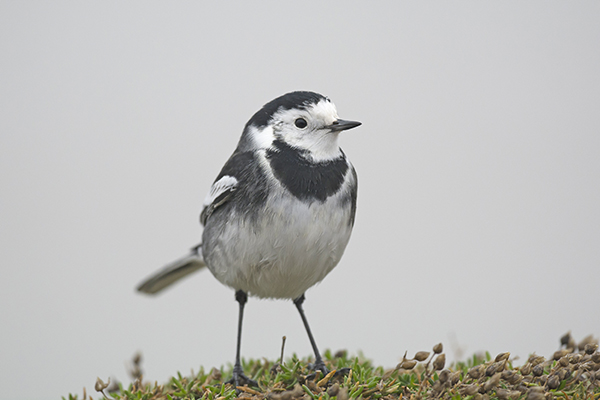An early morning start Saturday saw me awake at 5 am waiting by the phone for news on the proposed canon netting session with SCAN in N Wales. A decision was being made at 6 am depending on the weather. I'd been checking the weather forecasts for the previous 24 hrs and so it was no surprise when Steve emailed me to say it was off! That left me with a simple decision - join Steve for some sea-watching off Hilbre later in the morning!
The weather was pretty grim but unfortunately the forecast gale force westerlies didn't materialise. However, our perseverance was rewarded with 5 Bonxies - including one that chased own and killed a 1st winter Herring Gull by drowning it and then proceeding to eat it - and a Skua species that we tentatively identified as a Pomarine. Good numbers of Great Crested Grebes and smaller numbers of Red-throated Divers were logged along with a small number of Guillemots and Gannets. Our vigil was made more bearable by Clare's gift of a Banana Loaf which we proceeded to devour with enthusiasm.
Star birds though were the 16 Purple Sandpipers roosting snugly on the west side and then appearing in front of the slipway as the tide ebbed.
These charismatic little waders are a feature of winters on Hilbre but in recent years their numbers have plummeted. A flock of 16 is a good number for November and hopefully will increase as the winter progresses.
The resident Rock Pipits put on a show feeding on the walls of the old lifeboat station directly in front of the seawatching hide and we were able to read the ring number from the photo's and determine this was one of the adult birds ringed in April this year.
The pipit was joined by a Pied Wagtail on several occasions but was chased off!
With the tide ebbing and the wind rising we left the hide and retired to the Obs to complete the daily log before heading off pausing only to check the waders on the tide edge and photograph a miserable looking Little Egret hunkered down out of the wind.
By now the rain was torrential and as I headed down the M53 toward home the battery warning light came on in the Landrover. Limping home I found the alternator belt had jumped off its pulleys and can only think the volume of water being thrown up off the road into the engine bay must have caused it. Sunday morning was spent cursing and swearing trying to fix it as one of the alternator bracket nuts had been rounded off!

















































































